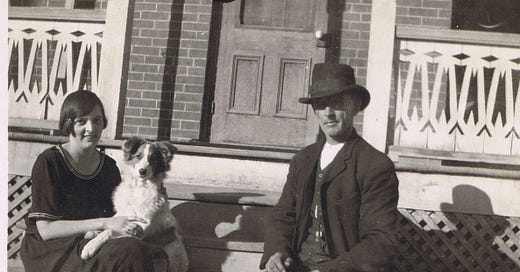The bulk of my sense of self is as a descendant of Scottish immigrants into Glengarry County, the first county in Ontario and one that holds the largest concentration of Scottish immigration in Canada. The Glengarry Highland Games, said to be the largest in the world, set less than an hour’s walk from the McLennan homestead. Each opening night’s fireworks we would watch from the back of the house. There was Highland-born Duncan Campbell, who begat Finlay who begat Angus Finlay who begat Frederick who begat Ellen Elizabeth who married John Duncan and gave birth to my father in the house where my sister lives. According to R.B. Campbell’s The Campbells and other Glengarry-Stormont and Harrington Pioneers (1983), it was Duncan Campbell, my fourth great grandfather, who emigrated from Glenelg, Inverness-shire, Scotland with his six sons: Finlay, Malcolm, William, Alexander, Hugh and Murdoch. “Like the Campbells of Breadalbane, and the Campbells of Dominionville, Duncan and his family came to Canada at the time of the Lord Bathurst Proclamation when the British government encouraged families (from Ireland, Scotland and England) to emigrate to Canada.”
Some time prior to 1826, Malcolm Campbell (b. 1796) settled on Lots 14 and 15 in the 20th Concession Indian Lands in Northwest Glengarry in the locality known as Athol. The “Indian Lands” was a strip of land two miles wide, running north from the St. Lawrence River to the Ottawa River which the British government had reserved for the St. Regis Indians. The Indians were quite willing to rent this land to write people who initially became tenants. Later (in approximately 1840) the British government arranged to take ownership of this land and then transferred ownership title to families who had previously been tenants.
It is from Finlay and Malcolm that emerge the “Campbells of Athol,” who originally settled with Duncan in 1817 on Lots 50 and 51, St. André Road, Côte St. George, Parish of St. Telespore. This area corresponds with a region now situated in Quebec, just across the provincial border from North Lancaster. So much of the original Glengarry settlements included what now sits well beyond the boundaries of County, to include the half of Stormont County to the immediate west, whole swaths of western Quebec, and north to the Ottawa River. When Glengarry originally mapped and marked across 1770, the boundaries stretched from the St. Lawrence to Ottawa Rivers. It was only once farmers in the northern properties complained of such difficulty delivering their goods through the swamp en route to Alexandria that Prescott County was carved out of the north half of Glengarry. New county lines, and a rail line established between Ottawa and Caledonia Springs, long since erased. By 1967, the year my parents were married, Ontario had completed the project of paving this length of low swampy land for the sake of a highway from Ottawa to Montreal, thus known as the King’s Highway, 417. As Royce MacGillivray and Ewan Ross offer early on in A History of Glengarry (1979):
The huge tract of Canadian wilderness which thus received the name of a Scottish Glen was divided approximately in half by a statue of 1798 to create a new county in the north, to be called Prescott. By the same statute, the southern portion, which inherited the name of Glengarry, was awarded or confirmed in the possession of the tract of land on its western border which is known as “Indian Lands.” Since this date, Glengarry has retained its boundaries essentially unchanged.
Athol, the small hamlet where my grandmother, Ellen and her sister Harriet were raised—Lots 12 and 13 in the 21st Concession Indian Lands—until, according to the Campbell book, their father retired and moved south into the village of Maxville, where he was also a member of municipal council. Athol was one of the surrounding hamlets that eroded, along with Dominionville, Tayside et al, once the rail line came through from Ottawa to Coteau Landing, and the village of Maxville was born. All that remains to mark the hamlet of Athol, it seems, is the sign at the corner.
photo: Harriet Campbell and her father, Fred, in Maxville;





Really enjoyed this read, Rob. My last name is actually maternal. My father was raised by his grandmother, so that's where Page comes from. My paternal last name would actually be Campbell. Both are from UK families who settled in the mountains to the north of the Ottawa River, sometime in the 19th century. For the Pages, I'm gen 6. The connections to the lower land as you describe here are fascinating!